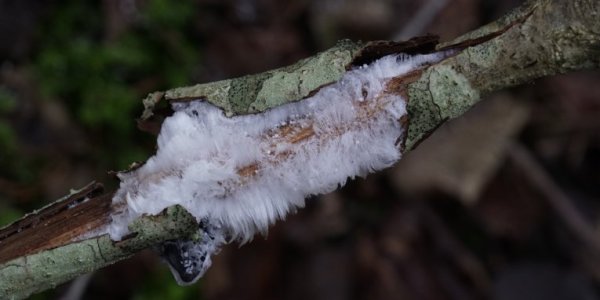Hair Ice to be Found in Forests
Winter provides a range of entertainment opportunities that depend on air temperature and presence of snow. When the air temperature is around zero, it is the best time to go to the forest and look for hair ice.
The candy floss-like, white formations are easy to notice at a time when there is no snowfall or when snow has already melted. The emergence of hair ice depends on a number of factors. First, the air temperature should be constant and just under one degree below the zero mark for at least two, three hours. Second, there should be durable lull, for example in deciduous, mixed or spruce forests. The most observant will have noticed that hair ice tends to appear in the same place for several consecutive years.
There are no two of them alike
Hair ice can be found on dead, damp deciduous trees and shrubs, often on spruce trunks and on individual branches – both on standing tree trunks and on fallen trees. They are only to be found on the sections that are not covered by bark, on naked wood.
After a thorough search of the discovery, it can be seen that it is an ordinary, yet peculiarly structured ice that winds away from the tree in the form of countless thin yarns that look like hair. The diameter of each individual yarn is only 0.01 to 0.02 mm. The bundle of the fine yarns can be a folded, twisted, curled. There are no identical sets of
It is not a fungus, it is a fungus-made formation
What makes these white ice strings wind? Formation of hair ice is provoked by the fungus called Exidiopsis effusa, which lives on dead wood, but it should be emphasized that these are only fungus-made formations. When the temperature falls below zero, the tree inhabited by the fungus starts to freeze and water is gradually squeezed out of its pores. The fungus releases a variety of specific chemicals that make every new drop of water that is squeezed out of the tree push away the previously frozen crystal and only then freeze into ice. Drop after drop, the hair stretches longer and longer. Ice formation can continue as long as there is water in the part of the tree inhabited by the fungus.
Thaw is the most rapid destroyer of hair ice. In particularly favourable meteorological conditions, hair ice can maintain its unique shape even for a few days.
It's time to look for a snowless tree and explore this unusual and fragile wonder of nature!
















